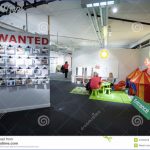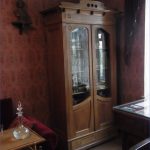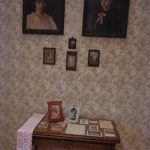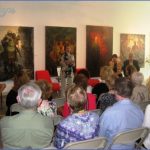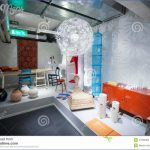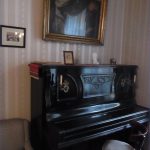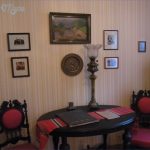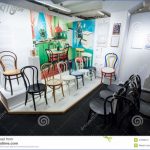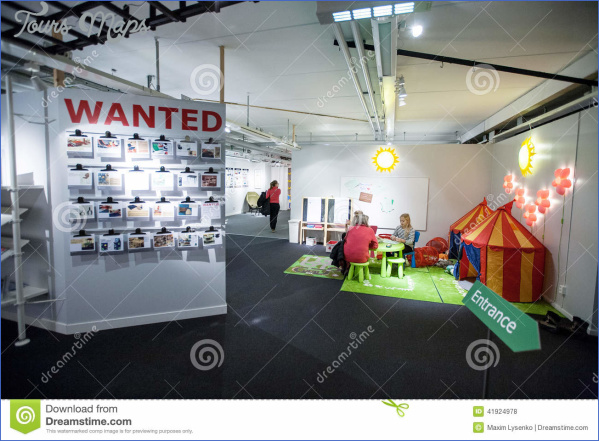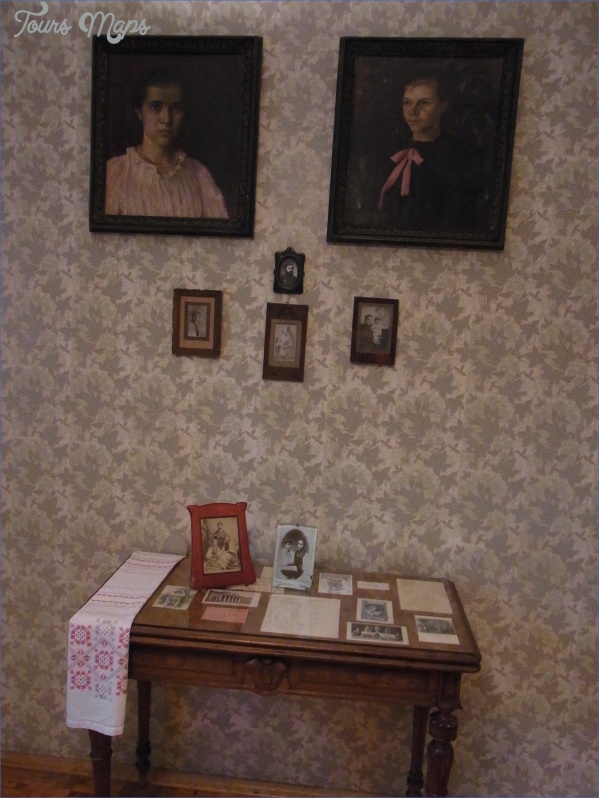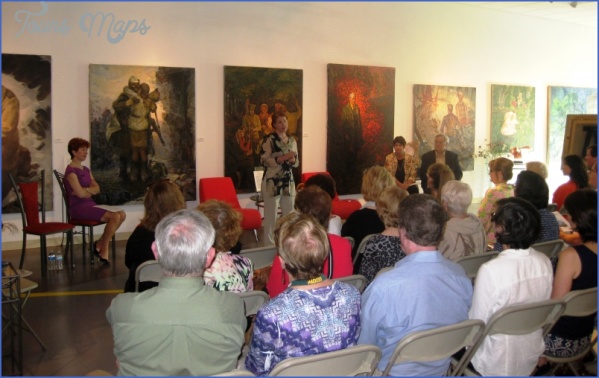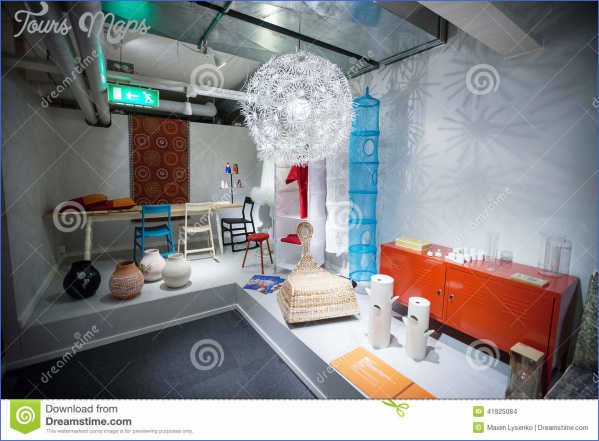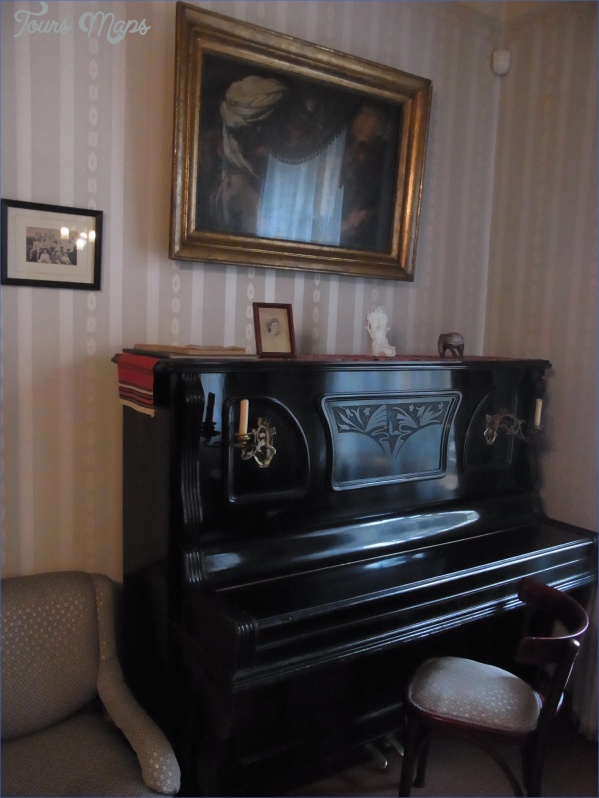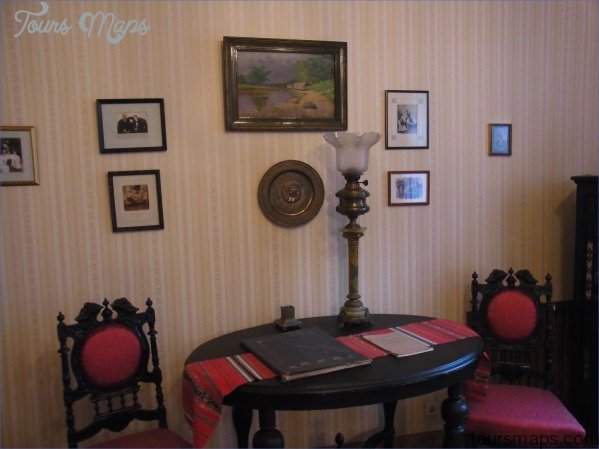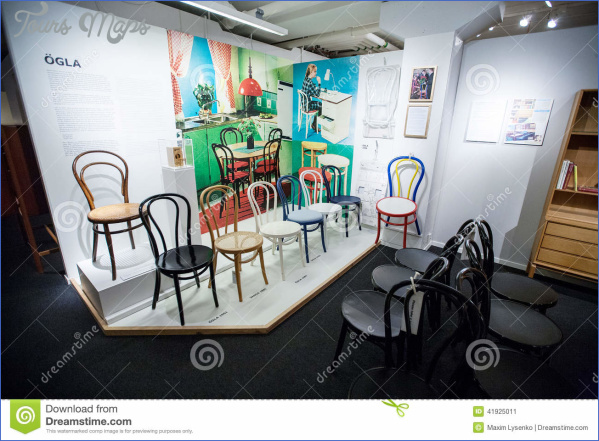LYSENKO MUSEUM
Mykola Vitaliyovych Lysenko, Ukraine’s greatest national composer, is generously commemorated in Kiev, where he spent most of his life: by a museum, a concert hall, a street and a Lysenko prize for contributions to Ukrainian musical culture. The first Lysenko exhibition, with 800 items, was mounted by the Academy of Sciences in 1927 and 70 volumes of his collected works were published during the 1950s. In 1965 a statue was erected outside the Shevchenko Opera and Ballet Theatre. Elsewhere in Ukraine, his name graces the opera house in Khar’kiv, the
music college in Poltava and the L’viv conservatory.
Lysenko was born in 1842. From his days at Kiev University he was involved in the nationalist and anti-tsarist movements. Although trained in Leipzig and St Petersburg, where he was a pupil of Rimsky-Korsakov, he began early in his career to collect Ukrainian folksong and when, in 1876, he was invited to compose an opera in Russian for the imperial court, he declined. He was determined to raise Ukrainian culture to the standards prevailing elsewhere in Europe. He never saw his national opera Taras Bul’ba staged because it was too ambitious for Ukrainian opera houses and he would not allow it to be translated (Tchaikovsky had wanted to arrange for a performance in Moscow); it eventually came to the stage in Soviet times, reorchestrated by his pupil L.M. Revuts’ky, and along with the poetry of Shevchenko it became a symbol of national identity. In 1904 he helped found the Ukrainian School of Music and Drama (later named after him) in rivalry to the Russian Musical Society School (now the Tchaikovsky Conservatory). In his last years he had several brushes with tsarist authorities and composed a revolutionary hymn; he was facing trial for anti-state activities when in 1912 he died, at the age of 70.
The first-floor flat where Lysenko lived during his last 18 years has been preserved, and the flats below it now form a museum (opened in 1980) and archive. The building is part of a compound of museum buildings occupied in Soviet times by actors and writers. Three of the six rooms of the flat have been painstakingly re-created from photographs and descriptions: the study (in which he died), the sitting-room across the hall and the dining-room. The study is furnished with an upright piano (his own was destroyed in World War II), a theorbo, a cymbalum and a hurdy-gurdy hanging on the wall, along with a bust, an icon, dried flowers and a desk with personal ornaments and his pince-nez; also a carved bookcase, a day bed, his travelling case and the original Art
LYSENKO MUSEUM Photo Gallery
Rights were not granted to include these illustrations in electronic media. Please refer to print publication The Lysenko museum, Kiev Deco velvet curtains. To these a trunk of embroidered costumes has been added. Lysenko’s own Bluthner, in playing condition, is in the formal sitting-room, along with a portrait from 1903, a gold clock and an elegant suite of furniture. There is a boudoir grand and a gramophone in the dining-room along with the dining table and chairs, a sofa and a desk; a balcony overlooks the back garden where a pear tree of which he was particularly fond still survives. The remaining three rooms serve to complement the museum rooms downstairs. A memorial room has photographs of the flat in Lysenko’s time, a pocket watch which stopped at the time of his death, a last photograph, his final notebook and documents relating to his death, along with a silver laurel wreath and funeral banners (his funeral procession was a political event, with 16,000 people lining the route and a choir of 1200). The second room is devoted to the celebrations of his centenary in 1942 and his 150th birthday in 1992. The former, in wartime, were modest in scale (stamps were issued, an exhibition was mounted in L’viv and a competition was inaugurated), but in 1992 there was a festival and a musicological conference in L’viv. In the final room there are displays of opera sets, costume designs, a maquette for a 1955 production of Taras Bul’ba and photographs of interpreters of his music, including the outstanding soprano Solomiya Krushel’nytskaya (who is commemorated in her own museum in L’viv). In the main museum, the first room offers a Soviet-era balancing act between tracing Lysenko’s roots to a noble Cossack family, whose coat of arms is proudly displayed, alongside the symbols of his affinity for Ukrainian folksong (a straw hat, writing box and pen, a three-string cello and a bandura/hurdy-gurdy). There is a facsimile of a polka he composed when he was eight. The room is dominated by a diorama of Hrynky, the Poltavian village where he was born. The second room, seating 60, is used for recitals. Its walls are lined with displays devoted to his years in St Petersburg, his career as a conductor, composer and educator in Kiev, pictures of the prima donna Olga O’Connor (who bore him five children: his marriage was childless) and his operas. There are cases with displays given over to his settings of the poetry of Shevchenko (more than 90, set as songs, cantatas and choruses) and the plays of his cousin Michael Staryts’ky (whose librettos for Lysenko included TarasBul’ba). The third room documents the 1903 Lysenko celebrations on the 35th anniversary of his return to Kiev. The final room is devoted to his last opera, Eneida, and his friendships with the poet Ivan Franko and other collaborators. The archive contains rich holdings of his music manuscripts, photographs and documents.
Maybe You Like Them Too
- Top 10 Islands You Can Buy
- Top 10 Underrated Asian Cities 2023
- Top 10 Reasons Upsizing Will Be a Huge Travel Trend
- Top 10 Scuba Diving Destinations
- World’s 10 Best Places To Visit

